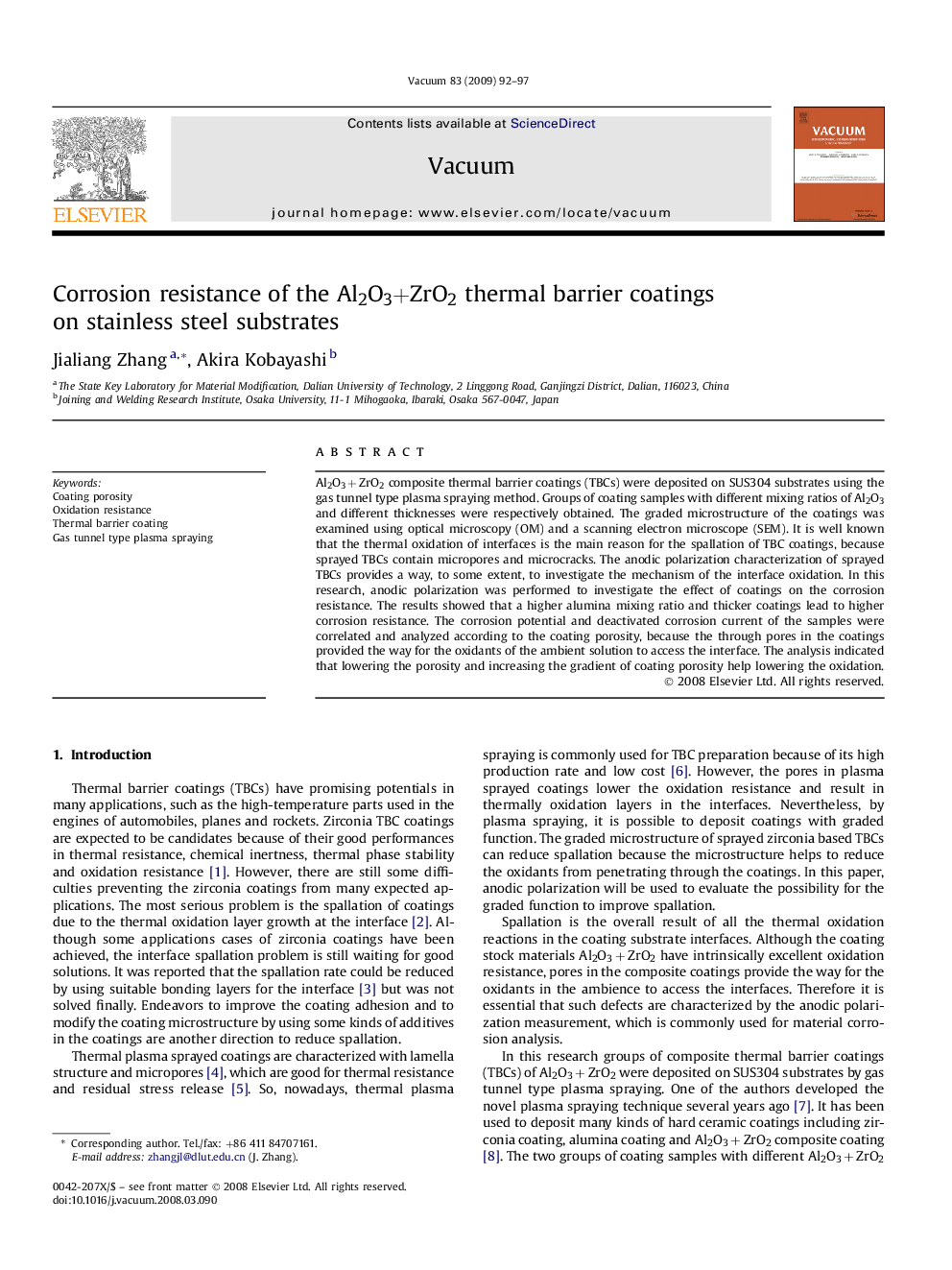| کد مقاله | کد نشریه | سال انتشار | مقاله انگلیسی | نسخه تمام متن |
|---|---|---|---|---|
| 1690129 | 1011251 | 2008 | 6 صفحه PDF | دانلود رایگان |

Al2O3 + ZrO2 composite thermal barrier coatings (TBCs) were deposited on SUS304 substrates using the gas tunnel type plasma spraying method. Groups of coating samples with different mixing ratios of Al2O3 and different thicknesses were respectively obtained. The graded microstructure of the coatings was examined using optical microscopy (OM) and a scanning electron microscope (SEM). It is well known that the thermal oxidation of interfaces is the main reason for the spallation of TBC coatings, because sprayed TBCs contain micropores and microcracks. The anodic polarization characterization of sprayed TBCs provides a way, to some extent, to investigate the mechanism of the interface oxidation. In this research, anodic polarization was performed to investigate the effect of coatings on the corrosion resistance. The results showed that a higher alumina mixing ratio and thicker coatings lead to higher corrosion resistance. The corrosion potential and deactivated corrosion current of the samples were correlated and analyzed according to the coating porosity, because the through pores in the coatings provided the way for the oxidants of the ambient solution to access the interface. The analysis indicated that lowering the porosity and increasing the gradient of coating porosity help lowering the oxidation.
Journal: Vacuum - Volume 83, Issue 1, 4 September 2008, Pages 92–97